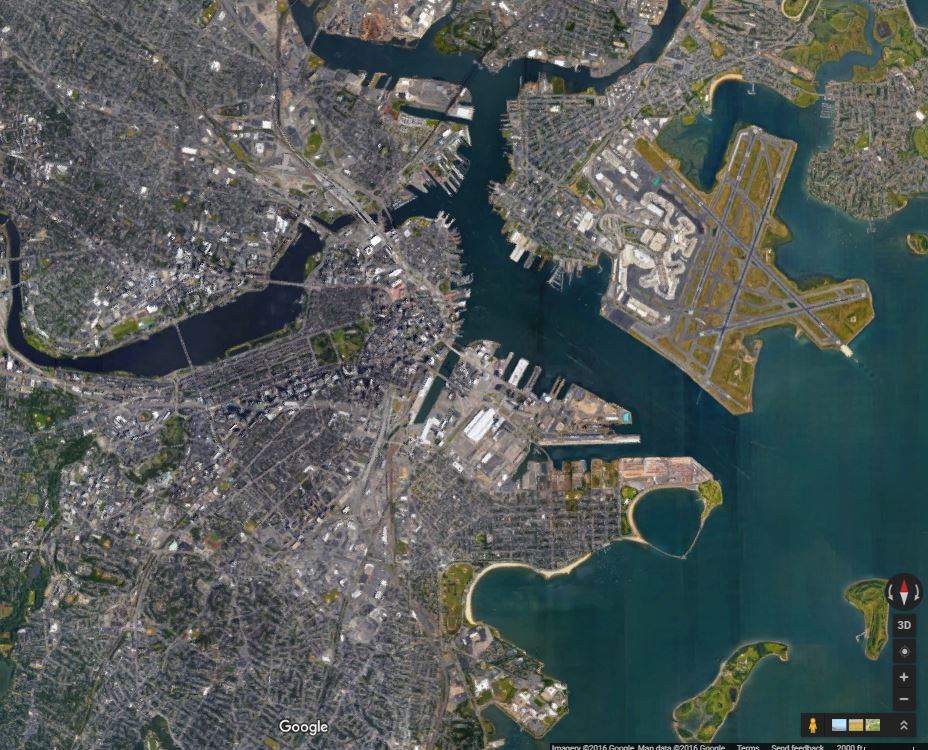
Uploaded on 2016-12-21 by Colleen Dunning
1. See Climate Central data. 2. The Climate Central site records an urban heat island effect of up to 15 degrees F for Boston, with an average increase of 1.3 degrees over surrounding rural areas. In the attached image of urban Boston, you can see the density of buildings, urban canyon effects, and lack of vegetation which can contribute to the heat island effect. Solar and long wave radiation can become trapped between buildings, and wind patterns in the urban microclimate can exacerbate local heat islands. Contrast that image with the rural surrounding area - which is dotted with single family homes and low-density town centers. These buildings are surrounded by vegetation (parks, woods, farmland) and exist as independent entities for the purpose of microclimate and energy use anaylsis. 3. While the heat island effect is notable in the city of Boston, its temperate climate means that the effect has a negative impact only in the summer months. During the winter months, the increased temperature means lower energy spending on heating buildings and a more pleasant microclimate. To reduce the effect in the summer, it would be possible to build in additional green buffers (parks), encourage the implementation of roofing and paving materials with a high SRI. 4. Currently, the only UHI mitigation efforts that are in place are in the LEED certification process. LEED certified the sustainable features of buildings, and one category of the certification deals with the heat island effect through exterior material choices and green roofs.